Popular search

Director Jameson will experiment with some night lighting of a car. The idea here is to film a few abstract sequences of a guy washing his car. These footages of old school vintage car washes have tons of character and just look awesome under the lights. Let’s see how to use some Godox lights to transform an everyday location into something a bit more stylized and edgy.
Background
Hello and welcome to Godox Film Lighting 101. Tonight, we'll be experimenting with some night lighting of a car. Let's check it out.
Tonight we are out here in the middle of summer in Texas and it is hot. The idea here is to film a few abstract sequences of a guy washing his car. I've always been a big fan of these old school vintage car washes. They have tons of character and just look awesome under the lights. And what's great about these car washes is here in the US, you can find them pretty much anywhere. We're going to use some Godox lights to transform an everyday location into something a bit more stylized and edgy.
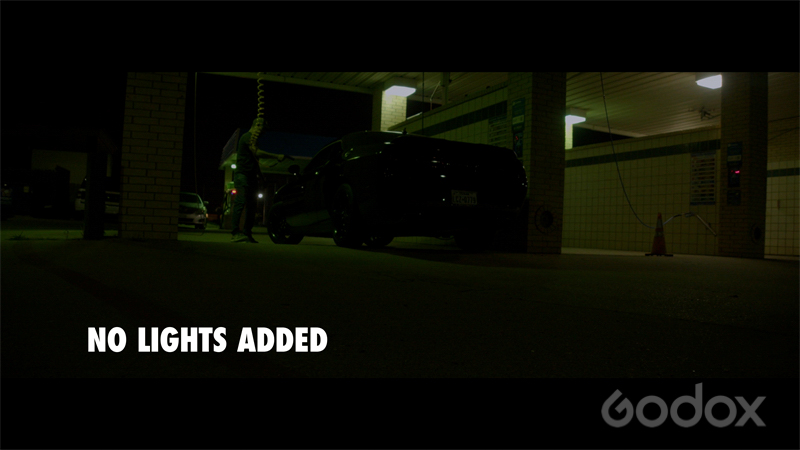
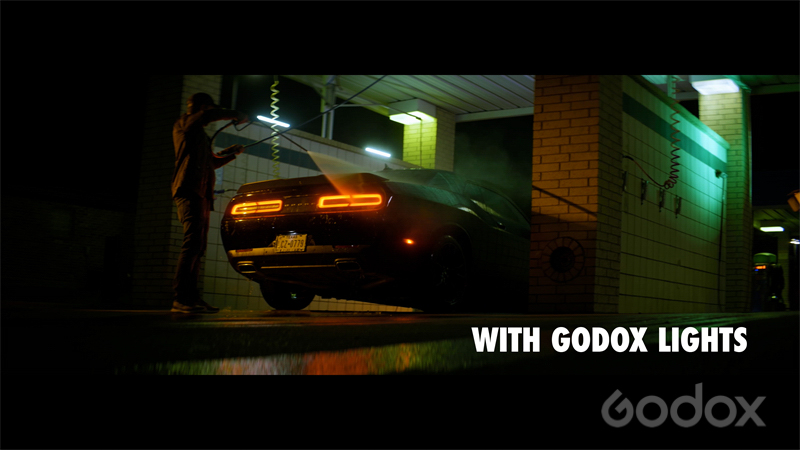
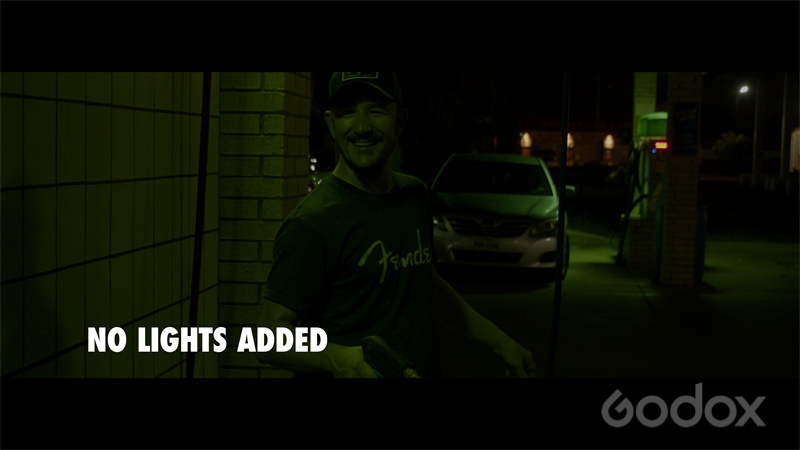
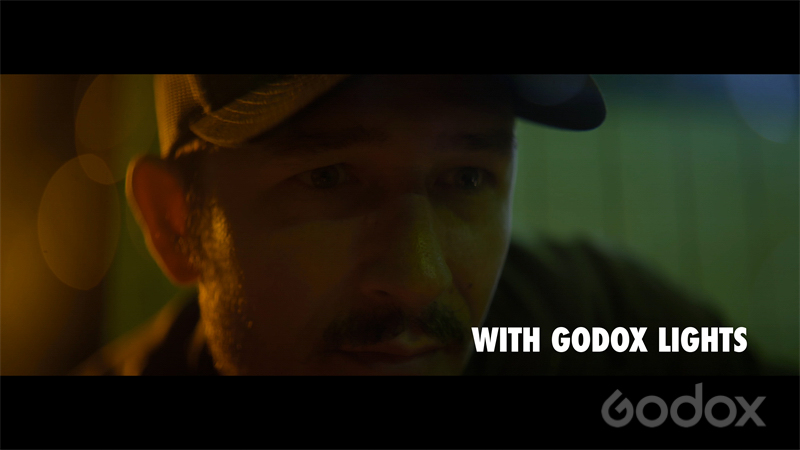
A great thing about shooting at a carwash is it gives you multiple options on which bay you want to actually set up your scene. So we came over here and we set up here on the end, and this just allowed us more freedom and let us place lights wherever we needed to like in the corners over here. And what I liked about every bay of this carwash is that they had these mercury vapor bulbs in each of the corners. What we did is we built off of those practicals and we use Godox lights to really enhance those lights for the scene.
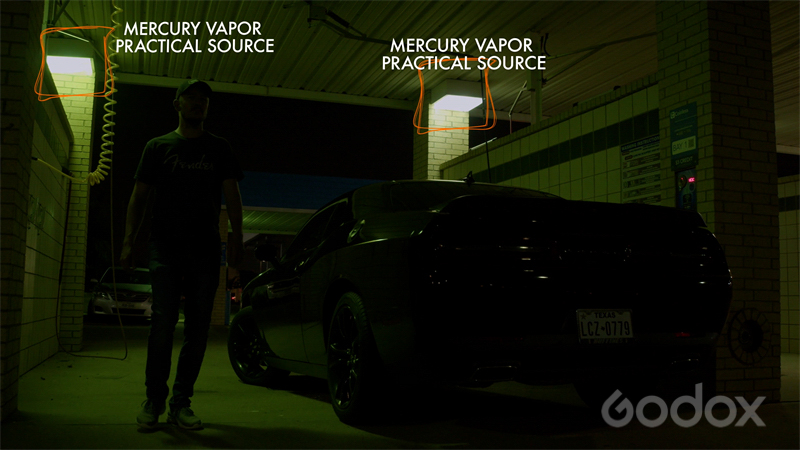
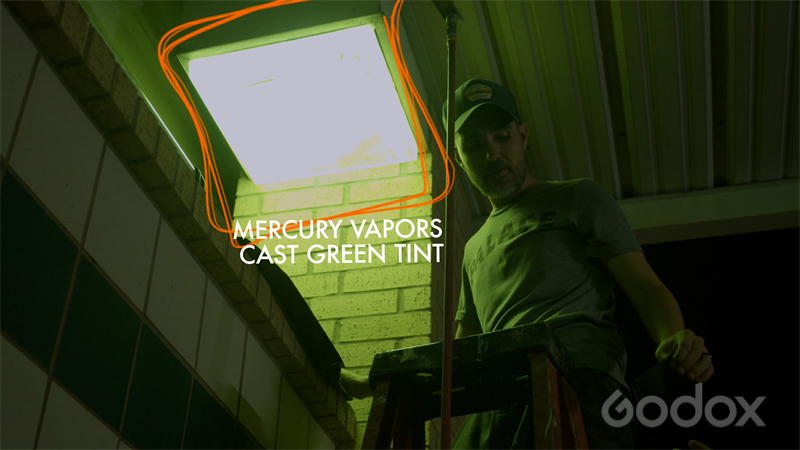
The idea
For starters, what is a better way to highlight an American vintage carwash than with some good old American muscle? So we have this Dodge Challenger that was perfect and it fit the bill. What we wanted to do was have our talent just wash his car and kind of be in the zone and just love what he's doing out here. So what we really liked about this black car is that you can clearly see the reflections everywhere and to really make this even better is when you add water.

Water is definitely a great tool for cinematographers. If you pay close attention to exterior night scenes in movies or big budget commercials and even music videos, you'll notice most of the time, the ground is soaked with water and puddles even when it's a clear night with no signs of rain. The use of water helps reflect light, which makes things more dynamic and can even add a few extra stops of light to a scene.
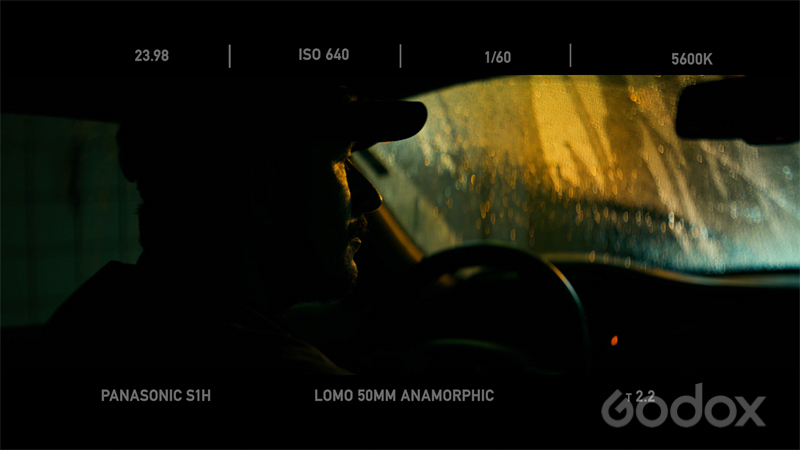
You can add water to pretty much anything like windows, cars, walls, even people if you wanted. Back-lighting water highlights the detail of the water, whereas front-lighting water can cause it to be nearly invisible. Of course, filming at a carwash can help with all of this, but if you find yourself in a remote location, you can always bring jugs of water or even water bottles to do the trick. Also, depending on the production budget, you can use a water truck to cover large surface areas or ask a local fire department to help you out with access to a firetruck or hydrant.
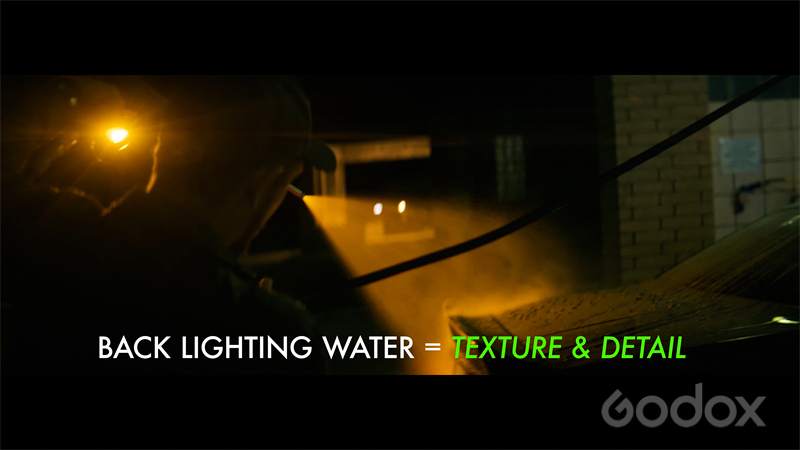
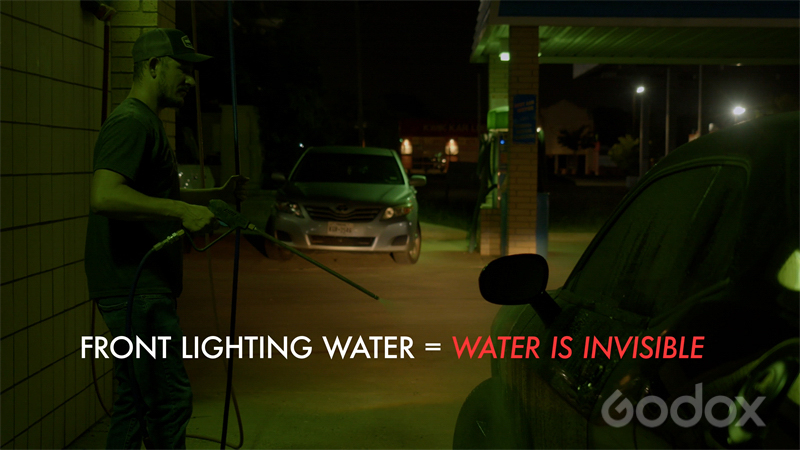
Camera Setup
Tonight, we're doing a lot of experimenting, and what is a better way to experiment than shooting handheld? Shooting handheld really allows you flexibility to find your shot and kind of get lucky with your composition so I love going handheld. It's probably my favorite way to shoot. And what we have tonight is we're using the Panasonic S1H with a LOMO 50 millimeter round front anamorphic lens. Using an advantage lens really helps compliment an adventurous location like the one we're at tonight.
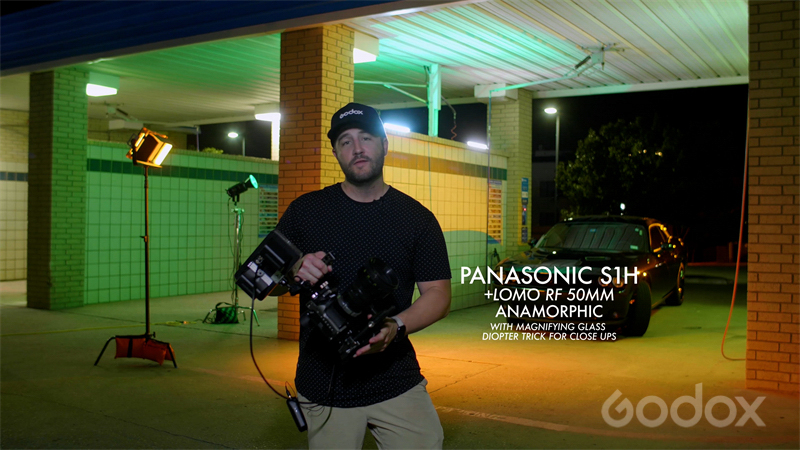
Lighting Setup
So the first thing we wanted to do was build off the practicals on location. The mercury vapors were up there up high and to basically compliment those lights, what we wanted to do was add a streetlamp kind of motivation. And so using a light like the LD150R is perfect for this.

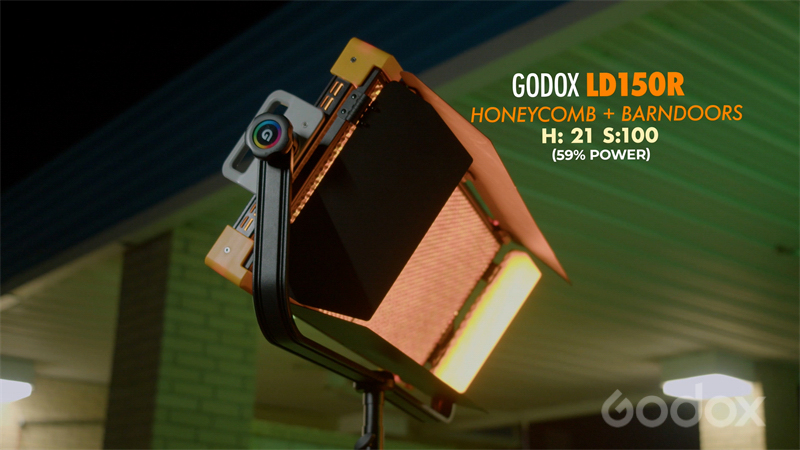
We're able to dial in the hue to exactly the orange tone of an old street lamp and we added a honeycomb and some barn doors. It's containing the light in a narrow pool, so that the light doesn't spill all over the scene. And this light will also backlight the water, which really helps the reflections across the car.
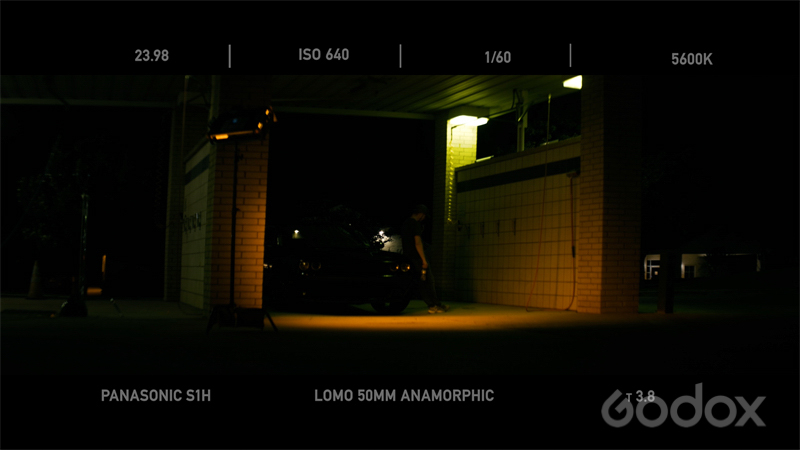
From here, what we wanted to do was add a little bit of fill light to the environment. So we took four Godox TL60s and these lights are really cool because they can serve as practical lights within your scene and I just really like how they look with the anamorphic lens. So I can use the Godox light app, I can turn them on, I can control the hue, saturation, brightness and what's really handy is when the lights are placed up high like they are right now, I can be behind the camera and still control everything with the lights.
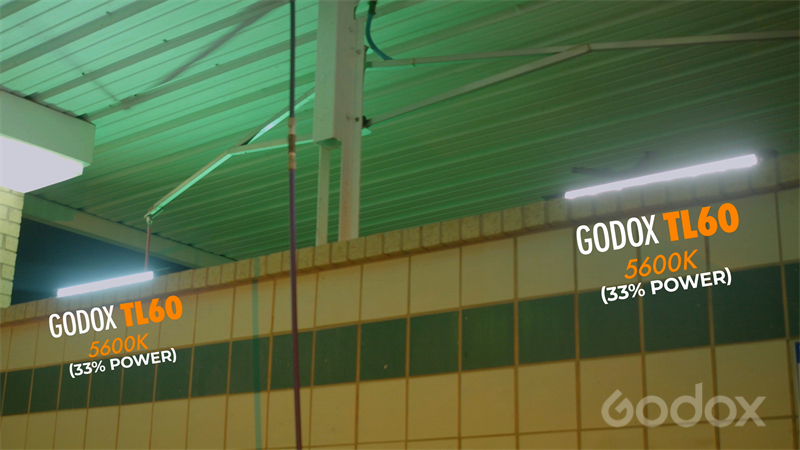
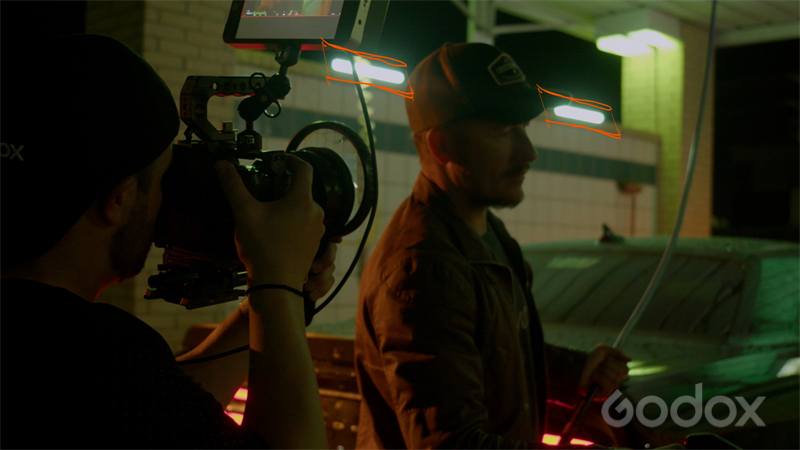
From there, what we wanted to do was compliment the orange tone coming from the LD 150R. So we took a Godox SZ150R and this light is full RGB and we thought that a good turquoise type tone would really match the orange. So we have an orange and teal setup. We turn this on. It's illuminating this bay right here next to the one that we're filming in, but it's also bouncing off of the ceiling to create shadows and then aluminate the car, the ground and the subject below.

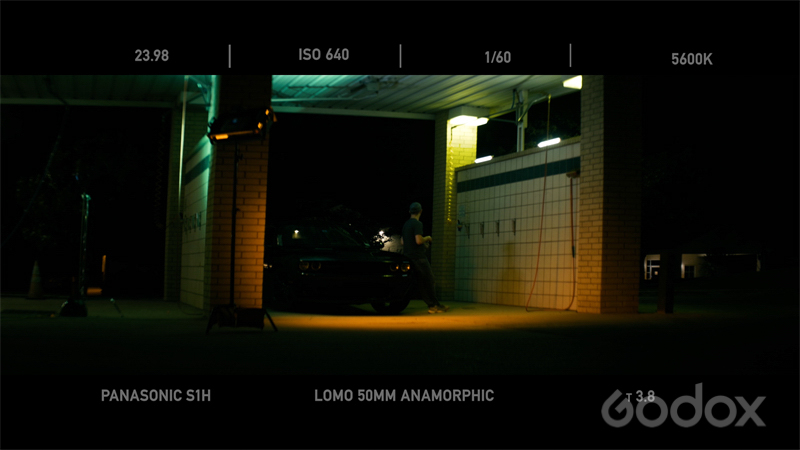
To create balance within our scene, what we wanted to do on the opposite side of the bay is use a Godox S60 focusing light and this light is really cool because it shoots a narrow beam, especially with the barn doors attached and it's super high output. It really highlights the water, which really enhances the texture that's all over the car. To add more of an orange streetlamp effect, just like the other light, we added an amber gel to this one and it just makes it look more realistic in the scene and it helps create balance within the environment.
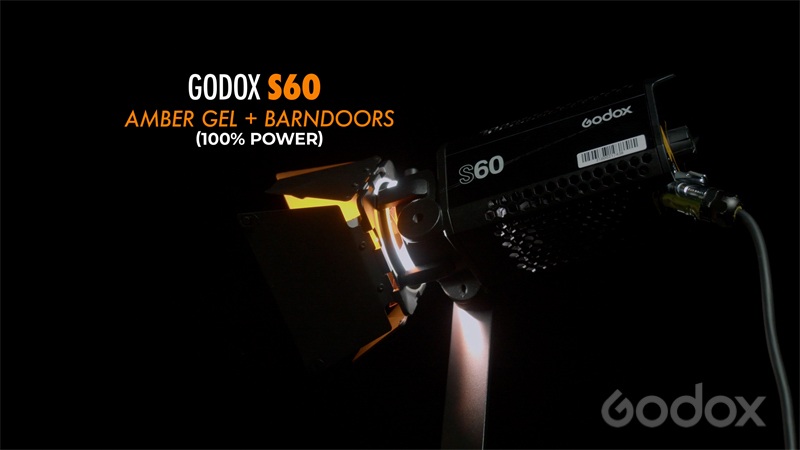
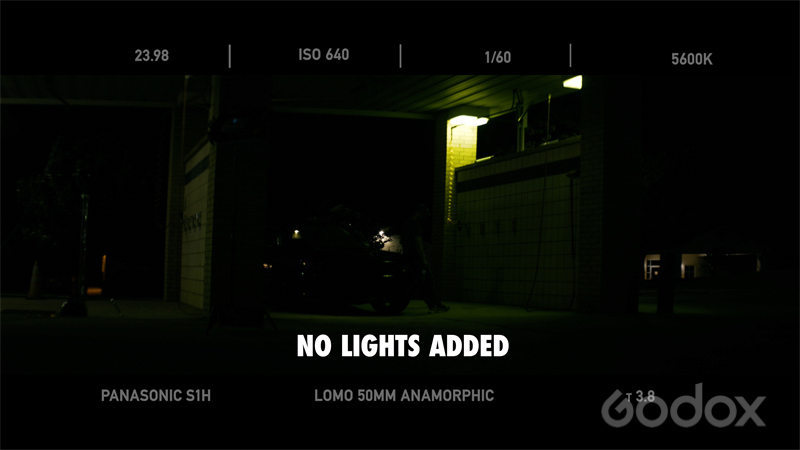
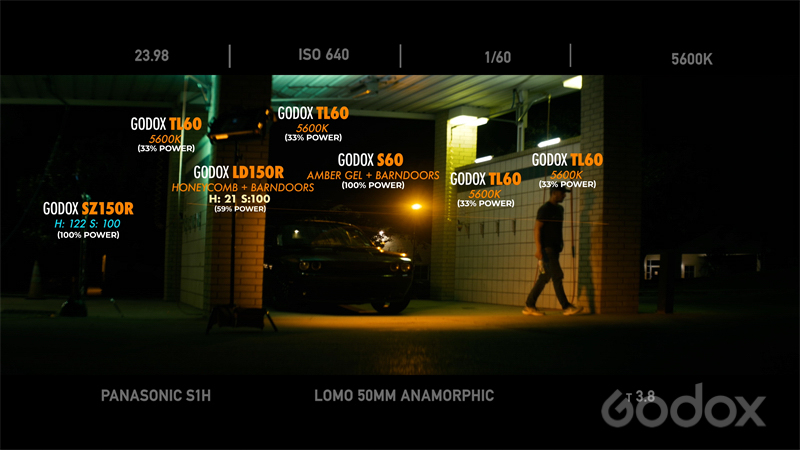
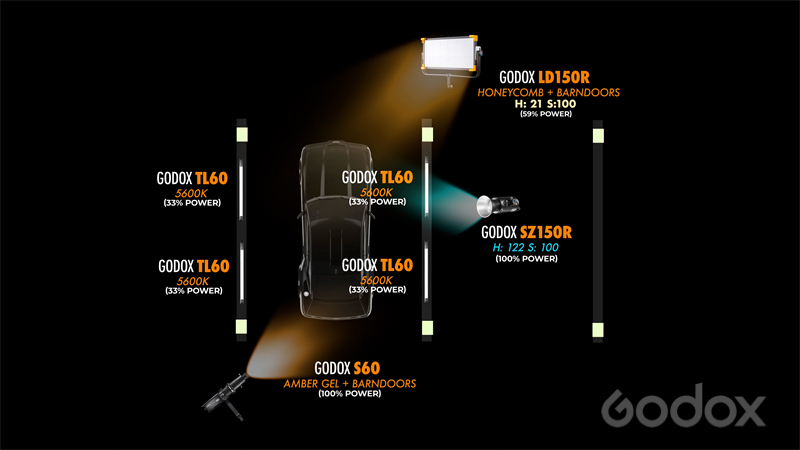
For this particular shoot, what was really nice is most of these Godox lights are all battery powered so it allowed us to get more experimental and it quickly set things up and move things around more efficiently. Since we were shooting an abstract sequence, we were able to shoot kind of out of order. We shot all of our whites first and then we moved in and shot our closeups inside the car. We took the lights that we had already lit up everywhere and we just brought them in closer and we experimented with what was working and where. And we just noticed, if we move a light in a certain direction, we could eliminate the water on the windshield a certain way or on the driver's side window or on his face.
Sometimes that's what's best about not having a set structure is that you can get experimental and you can find the right shot for the right moment. When you're using a lot of lights around a lot of water, things can get sketchy really fast, so luckily Godox did the research and they thought about this. They have a TL30 that comes with this cool waterproof bag. That's really a lifesaver when it comes to filming something like the situation we find ourselves in right now and what's nice about this is we can set it on a windshield, literally wet down the car with the light on the windshield and get all the reflections of the water coming all around it.
Hopefully you can use a few of these lighting techniques to help with filming a car scene at night.